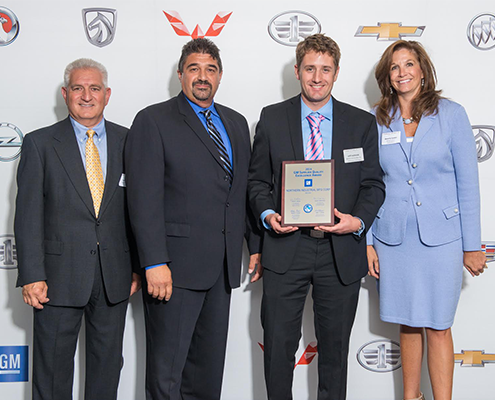Introduction to Automotive Transmission Parts
The world of automotive transmissions is both complex and fascinating. These essential components of vehicles are responsible for transferring the power generated by the engine to the wheels, allowing the car to move. Without a well-functioning transmission, a car would simply not be able to operate. Therefore, understanding the intricacies of automotive transmissions is crucial for any car owner or mechanic.
An automotive transmission’s primary role is to control the power output from the engine. It does this by shifting gears, which in turn changes the torque provided to the wheels. This allows the car to move at different speeds while ensuring the engine is operating efficiently. It’s a delicate balance that requires precision and fine-tuning.
But how is this precision achieved? The answer lies in an often-overlooked component of automotive transmissions: shims.
The Role of Shims in Automotive Transmissions
Shims are thin pieces of material, typically metal, that are used to fill gaps or adjust the fit between components in a machine or structure. In the context of automotive transmissions, shims play a crucial role in ensuring the correct alignment, spacing, and operation of various components.
Shims are used in several areas of a transmission, including the gears, bearings, and shafts. By accurately adjusting the spacing and alignment of these components, shims help to reduce wear and tear, improve efficiency, and enhance the overall performance of the transmission.
However, the application of shims requires precision and expertise. It’s not simply a matter of inserting a shim where there’s a gap. The correct type, thickness, and placement of the shim must be determined, and this is where the process of pre load shimming comes into play.
The Process of Pre Load Shimming
Pre load shimming is the process of applying a specific amount of pressure or ‘preload’ to a bearing or other component in a transmission through the use of shims. This preload helps to ensure the correct alignment and spacing of the components, reducing the risk of excessive wear and tear and enhancing the efficiency and performance of the transmission.
The process begins by determining the required preload. This is typically done through calculations based on the specifications of the transmission and its components, as well as the expected operating conditions. Once the required preload is determined, the correct thickness and number of shims can be selected.
The shims are then carefully placed in the required locations, ensuring the correct alignment and spacing of the components. This process requires a high degree of accuracy and precision, as even a small error can affect the performance of the transmission.
Benefits of Proper Pre Load Shimming in Automotive Transmissions
Proper pre load shimming offers several key benefits for automotive transmissions. Firstly, it helps to reduce wear and tear on components. By ensuring the correct alignment and spacing, shims help to prevent excessive contact between components, reducing friction and wear. This not only helps to extend the lifespan of the components but also reduces the risk of transmission failure.
Secondly, pre load shimming can improve the efficiency of a transmission. By optimizing the alignment and spacing of components, shims can help to reduce energy loss, boosting the transmission’s efficiency. This can result in improved fuel economy, delivering savings for the vehicle owner.
Finally, pre load shimming can enhance the performance of a transmission. By delivering precise control over the alignment and spacing of components, shims can help to ensure the smooth and effective operation of the transmission, delivering an improved driving experience.
How Shims Improve the Functionality of Automotive Transmissions
Shims play a vital role in improving the functionality of automotive transmissions. They maintain the alignment of gears and bearings, ensuring that the transmission operates smoothly and efficiently. With proper shimming, the transmission can deliver the power from the engine to the wheels more effectively, resulting in improved performance.
Furthermore, shims help to reduce noise and vibration in the transmission. By ensuring the correct spacing and alignment of components, shims can prevent excessive contact and friction, which can cause noise and vibration. This contributes to a quieter, smoother ride, enhancing the overall driving experience.
The Role of Shims in Enhancing Automotive Transmission Performance
The role of shims in enhancing automotive transmission performance cannot be overstated. By optimizing the alignment and spacing of components, shims can significantly improve the performance and longevity of an automotive transmission.
Shims can help to improve the shifting performance of a transmission, resulting in smoother, faster gear changes. They can also enhance the transmission’s durability by reducing wear and tear on components. Furthermore, by improving the efficiency of the transmission, shims can boost fuel economy, delivering savings for the vehicle owner.
Case Studies: Impact of Proper Pre Load Shimming on Automotive Transmissions
There are numerous case studies that highlight the impact of proper pre load shimming on automotive transmissions. For instance, a study carried out by a leading automotive manufacturer found that by improving the shimming process in their transmissions, they were able to reduce failure rates by over 20%. This not only improved the reliability of their vehicles but also resulted in significant cost savings.
Another study, conducted by a transmission repair specialist, found that by using a more precise shimming process, they were able to extend the lifespan of transmissions by up to 30%. This delivered substantial savings for their customers and highlighted the importance of proper pre load shimming.
Choosing the Right Shims for Your Automotive Transmission
Choosing the right shims for your automotive transmission is crucial. The type, thickness, and number of shims required will depend on the specifications of the transmission and its components, as well as the expected operating conditions.
When selecting shims, it’s important to consider the material they’re made from. Shims can be made from a variety of materials, including steel, brass, and plastic. The choice of material will depend on the application and the operating conditions.
It’s also important to consider the thickness of the shims. The thickness required will depend on the amount of preload required, which in turn depends on the specifications of the transmission and its components. It’s crucial to select the correct thickness to ensure the correct alignment and spacing of components.
Frequently Asked Questions about Shims and Automotive Transmissions
Finally, let’s address some frequently asked questions about shims and automotive transmissions.
Q: Are shims necessary in all automotive transmissions?
While it may depend on the specific design of the transmission, shims are generally a crucial component in most automotive transmissions. They play a key role in maintaining the correct alignment and spacing of components, enhancing performance and longevity.
Q: How often should shims be replaced?
The frequency of shim replacement will depend on the operating conditions and the quality of the shims. However, as a general rule, shims should be inspected and replaced if necessary during routine transmission maintenance.
Q: Can I install or replace shims myself?
While it’s possible for someone with mechanical expertise to install or replace shims, it’s generally recommended to have this work carried out by a professional. The process requires a high degree of accuracy and precision, and even a small error can significantly impact the performance of the transmission.
Automotive Transmission Parts Manufacturing
In conclusion, proper pre load shimming plays a crucial role in enhancing the performance and longevity of automotive transmissions. By ensuring the correct alignment and spacing of components, shims can reduce wear and tear, improve efficiency, and boost performance, delivering benefits for both vehicle owners and mechanics.
Thank you for visiting our blog where we keep you updated on the latest News and Events in automotive manufacturing!
Please check back often to learn what is going on with Northern Industrial Manufacturing, in the world of precision thrust washers, selective shims, and spacers.




